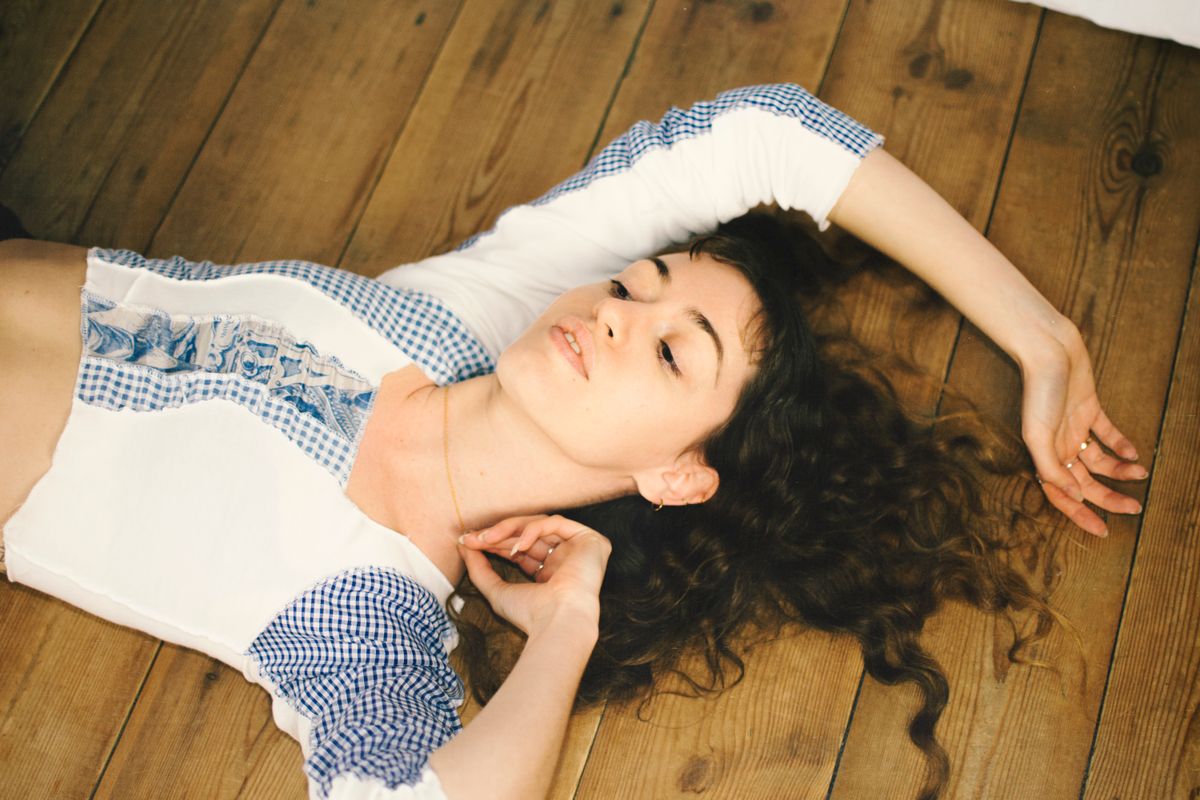Depop is a shopping-based app that combines features from platforms such as eBay and Instagram. Users are able to buy, sell, and market their preloved or handmade garments, making fashion more accessible and less wasteful.
We spoke to sustainable, made-to-order womenswear brand founder, Rosie Bishop, about how she launched ‘ROSAYAB’ on Depop during the pandemic.
Rosie works single-handedly at her East London studio, creating patchwork garments from locally sourced fabrics combined with offcuts and repurposed deadstock materials. Each piece is constructed by hand on a made-to-order basis, challenging fast fashion and ensuring ROSAYAB pieces are always sustainable and ethical.
Launching a business in a pandemic
Rosie began making pieces for friends at the start of the UK lockdown in March 2020. The time and creative freedom allowed Rosie to design her first collection. Initially taking to Instagram to launch ROSAYAB, Rosie decided to explore Depop.
Depop acts as a platform for start-ups and independent designers. Rosie told us how the app really enabled the exposure and customer base of her brand to grow. Since the first ROSAYAB collection launched on Depop, the app has included the brand in its creative interview program. Allowing small creators to share their brand ethos with Depop’s Instagram following of 680k. As well as this feature, brands like ROSAYAB can become verified on the app, much like Twitter and Instagram. This brings even more traction towards a seller’s page.
Influencer marketing approach
Where we may be familiar with influencers sharing their ‘hauls’ of clothing from fast-fashion brands such as Pretty Little Thing and Missguided, popular influencers such as Emma Chamberlain and Olivia Grace Herring are now showing their audiences how it is cool to shop small and second hand.
Instagram and Youtube influencers are becoming the GenZ version of glossy fashion magazines. They promote brands that their loyal following will invest in. When influencers share clothing that they have purchased from second-hand platforms such as Depop, it becomes important for sellers and creators to tune into their new customers.
Micro-influencers Vs. Macro-influencers
Rosie gets a lot of engagement from micro-influencers expressing an interest in brand collaborations via Instagram. In order to gain exposure on Instagram, Rosie offers influencer gifting to pages with over six-thousand followers. Also approaching influencers organically who she feels are a good fit with her brand ethos.
The pro of working with micro over macro-influencers is that they are often more authentic with their content. It is more likely that an audience will believe that a micro-influencer enjoys a product, as opposed to a product promoted by the likes of someone like Kim Kardashian who is less relatable to ‘normal’ people.
Connecting with micro-influencers is also more attainable for small, one-person brands such as ROSAYAB, as they don’t have to invest a large sum of money in return for brand exposure. Of course, macro-influencers have larger audiences, but micro-influencers allow small brands to grow at a steady and sustainable pace.
Expanding brand reach
Rosie personally believes that the next avenue of growth for ROSAYAB will involve collaborating with influencers with a slightly greater following, which in turn will help to grow her own social media presence surrounding ROSAYAB. Rosie said: “I now have to consider marketing strategies more. Something I also need to learn. I say yes to every opportunity for an interview as it is exposure [to her brand].” Fashion brands remaining consistent with influencer marketing will aid in increasing both sales and customer loyalty.
Looking towards the future, physical shopping experiences may rise in popularity again post COVID, running in conjunction with online commerce. Brands that are able to build and maintain relationships with their customers now will have built a platform that allows them to succeed in whichever medium takes the lead as the fashion industry develops.









